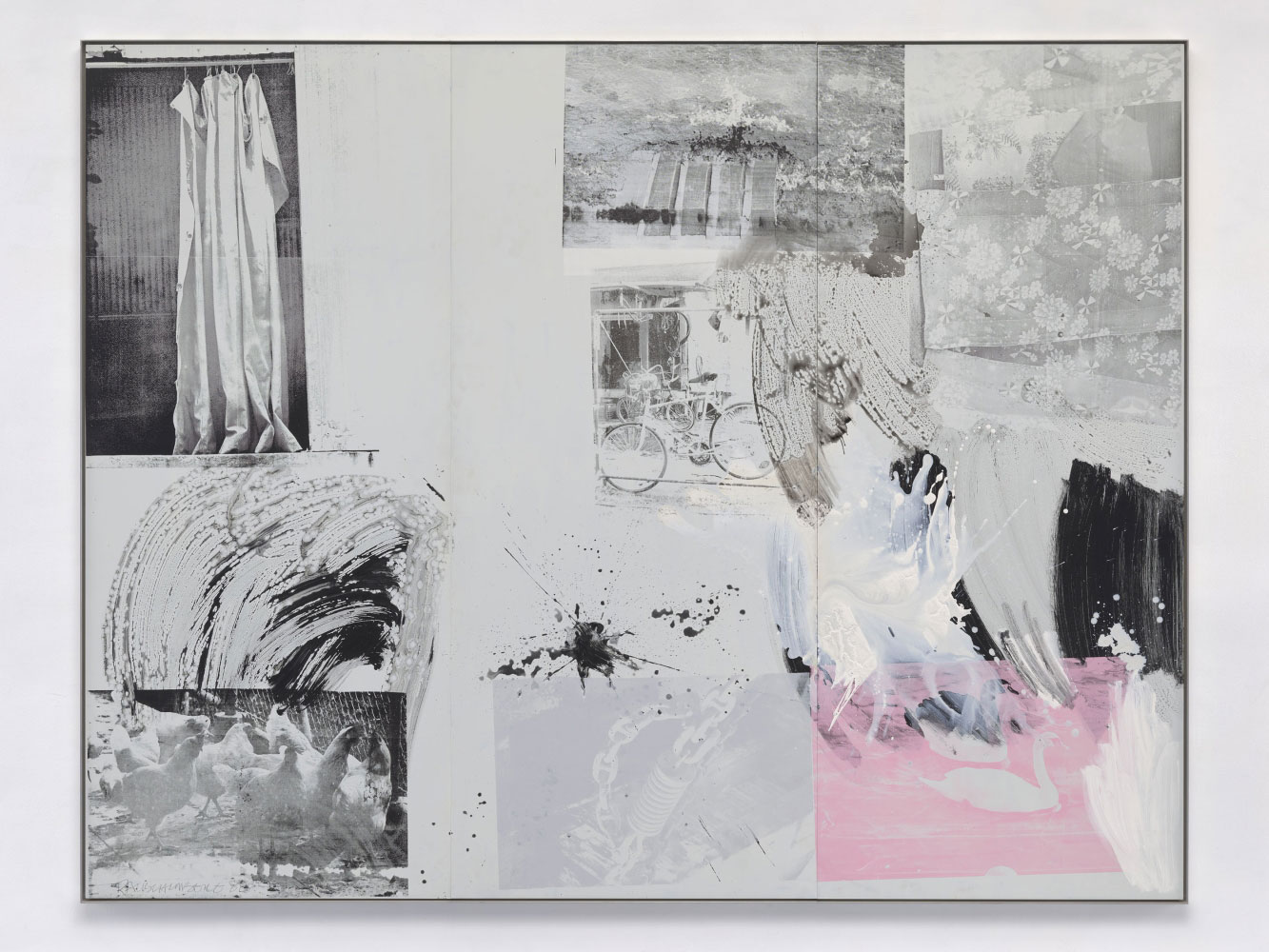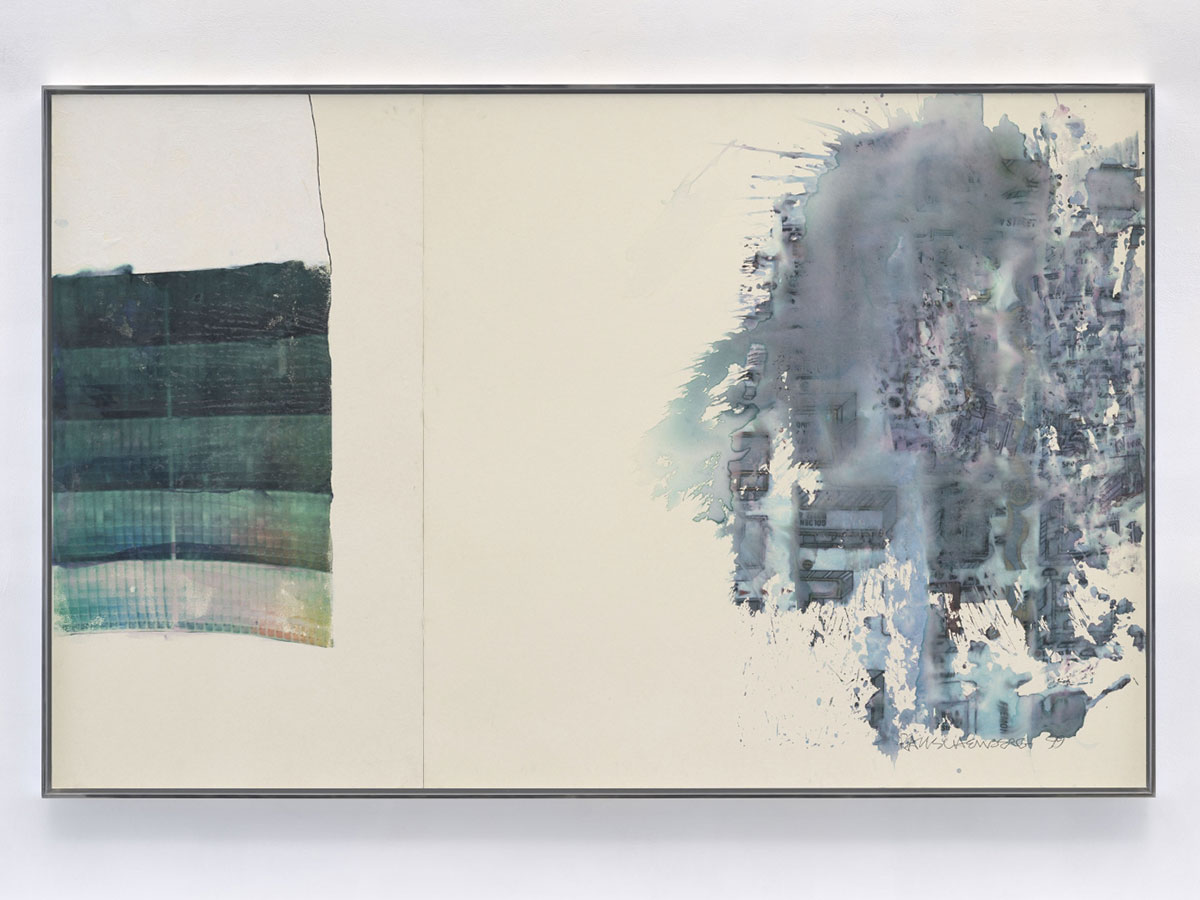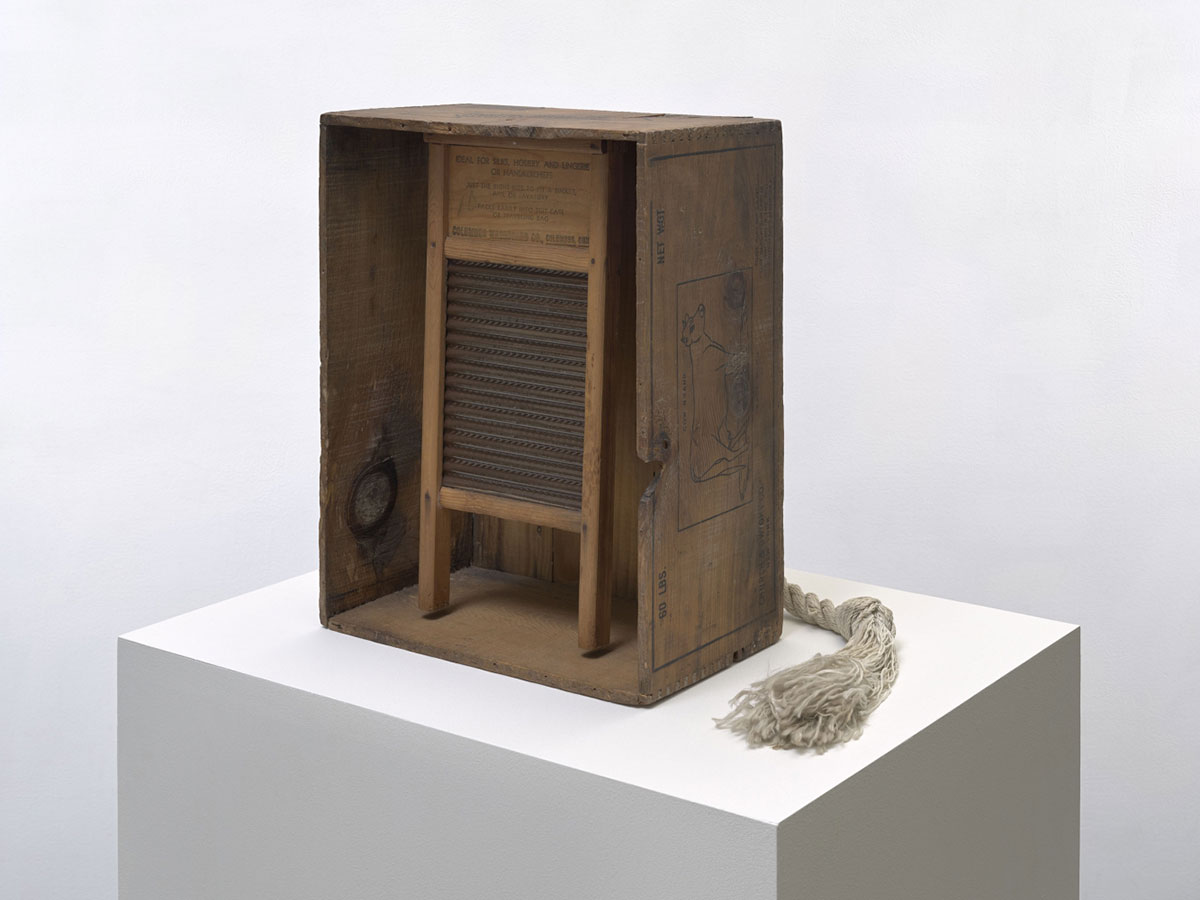PRESENTATION: Robert Rauschenberg-Exceptional Works, 1971-99, Part II
 Robert Rauschenberg was one of the most influential artists of his time and still is. His approach to art was eclectic, consisting of multiple images, materials and photographs transferred or sculpted to the canvas with a large variety of different techniques. Rauschenberg wanted to reflect the world around him in his art and creative activities. Many of his latest works have resulted from lifelong exploration of image-transfer methods, as well as his open-minded attitude towards the world around him (Part I).
Robert Rauschenberg was one of the most influential artists of his time and still is. His approach to art was eclectic, consisting of multiple images, materials and photographs transferred or sculpted to the canvas with a large variety of different techniques. Rauschenberg wanted to reflect the world around him in his art and creative activities. Many of his latest works have resulted from lifelong exploration of image-transfer methods, as well as his open-minded attitude towards the world around him (Part I).
By Dimitris Lempesis
Photo: Mnuchin Gallery Archive
Robert Rauschenberg is one of the most influential artists of the 20th and 21st Centuries. His use of found and experimental materials, collapsing of distinct artistic categories, and an eye towards collaboration and political activism have been inspiration for younger artists for generations. Paradoxically, the breadth of his multidimensional and perpetually ambitious oeuvre has yet to be adequately examined, and his later experiments have been given less acclaim as a result. With examples from fourteen different series, the exhibition “Robert Rauschenberg: Exceptional Works, 1971-1999” aims to provide a new avenue through which to appreciate this innovative artist. In juxtaposing these works, viewers can see how themes Rauschenberg first touched on in early works such as the “White Paintings” (1951) or the “Combines” (1954–64) remained anchors in his practice while evolving to meet each present moment. The exhibition’s earliest work is “Castelli / Small Turtle Bowl” (1971) from the “Cardboard” series (1971–72), made shortly after his consequential move to Captiva, off the coast of Florida. Here, the choice of found cardboard illustrates many things at once: a continued preference towards readymade, readily available materials, and a fascination with the history of each chosen object; a reflection on consumerism and globalization; and Rauschenberg’s personal experience of moving and traveling. These themes continue and morph in the “Hoarfrost” (1974–76) and “Jammer” (1975–76) series, both of which are represented in the exhibition. Each take hung and draped fabric as their starting point, but to different ends. The “Hoarfrost” such as “Untitled (Hoarfrost)” (1974), revisit the solvent transfer technique Rauschenberg first developed while traveling with Cy Twombly in the early 1950s, imparting faint and haunting imagery onto the fabric. Meanwhile, the series title is pulled from Dante’s “Inferno”, a nod to his earlier body of Dante Drawings (1958–60) also made with the solvent transfer process. As the “Hoarfrost” evolved into the “Jammers” (whose name is taken from the term “windjammers,” again inspired by his move to Captiva) Rauschenberg radically removed nearly all imagery to allow the fabric to take center stage. Inspired by a visit to India in 1975, the “Jammers” make plain Rauschenberg’s turn towards a global outlook that would culminate in the Rauschenberg Overseas Culture Interchange (ROCI) project (1984–91), represented in this exhibition by “My Panare Dream With Yutaje / ROCI VENEZUELA” (1985). The “Jammers” went on to inspire the set design for Merce Cunningham’s 1977 performance, “Travelogue” (1977). Rauschenberg’s interest in the collaborative nature of theater and the fluid movement of dance was a continuous thread throughout his career and features in another work in the exhibition “Balcone Glut (Neapolitan)” (1987), part of the Neapolitan subset of the “Glut” series (1986–89/1991–94). Originally conceived as part of a last-minute set design for a Trisha Brown performance in Naples, the work hung above the dancers’ heads as they moved across the stage, creating a fractured relationship between set and performer. Again, made of found material, this time recycled industrial parts, the artist assembled “Balcone Glut” at a time of cultural shift away from the hand-made towards a more digital, computerized presence. Ever the progressive, Rauschenberg quickly latched on to the possibilities offered by bourgeoning technologies such as Photoshop and Iris printers, culminating in works such as “S (Apogamy Pods)” (1999) from one of his final bodies of work made during the dawn of the twenty-first century and the internet boom. These pieces, along with other works from the “Spread” (1975–83), “Kabal American Zephyr” (1981–83/1985/1987–88), “Salvage” (1983–85), “Galvanic Suite” (1988–91), “Urban Bourbon“ (1988–96), “Borealis” (1988–92), “Spartan” (1991), and “Vydock” 1995) series,offer a visual representation of the range and freedom that Rauschenberg maintained while upholding a persistent continuity towards material exploration, collaboration, the breaking of boundaries, and global and local activism.
Photo: Robert Rauschenberg, Mirage (Jammer) [Detail], 1975, sewn fabric, 82 ½ x 70 ⅛ inches (209.5 x 178 cm), © 2022 The Robert Rauschenberg Foundation, Licensed by VAGA at Artists Rights Society (ARS), New York. Photo: Ron Amstutz, courtesy of The Robert Rauschenberg Foundation and Mnuchin Gallery, New York
Info: Mnuchin Gallery, 48 East 78 Street, New York, NY, USA, Duration: 3/5-11/6/2022, Days & Hours: Tue-Sat 10:00-17:30, www.mnuchingallery.com/


Right: Robert Rauschenberg, Baclone Glut (Neapolitan), 1987, assembled metal and insulated wire, 94 ⅞ x 55 ⅛ x 16 1/2; inches (241 x 140 x 42 cm), © 2022 The Robert Rauschenberg Foundation, Licensed by VAGA at Artists Rights Society (ARS), New York. Photo: Ron Amstutz, courtesy of The Robert Rauschenberg Foundation and Mnuchin Gallery, New York


Right: Robert Rauschenberg, Holdings (Vydock), 1955, silkscreen ink, acrylic, and graphite on bonded aluminum, 97 x 60 344; inches (246.4 x 154.3 cm), © 2022 The Robert Rauschenberg Foundation, Licensed by VAGA at Artists Rights Society (ARS), New York. Photo: Ron Amstutz, courtesy of The Robert Rauschenberg Foundation and Mnuchin Gallery, New York


Right: Robert Rauschenberg, Untitled, 1995, glass jar and lid with magnifying glass and silver chain, 9 x 5 ⅜ x 4 ⅛ inches (22.8 x 13.8 x 10.5 cm) width and depth variable, © 2022 The Robert Rauschenberg Foundation, Licensed by VAGA at Artists Rights Society (ARS), New York. Photo: Ron Amstutz, courtesy of The Robert Rauschenberg Foundation and Mnuchin Gallery, New York
